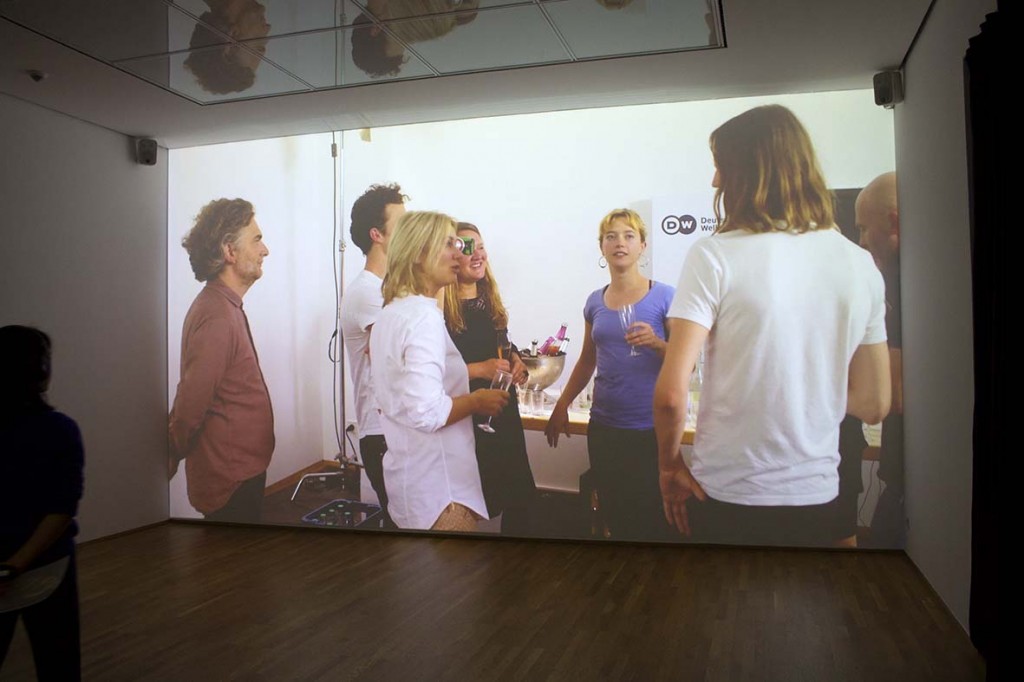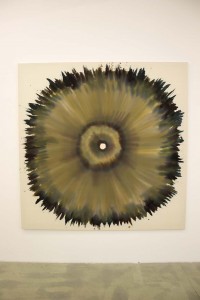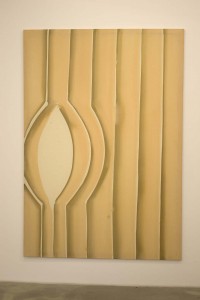Until January 17th, you can admire the works of the four contestants for the Preis der Nationalgalerie 2015, on view in Hamburger Bahnhof. Four different bodies of work from the outside, but intrinsically speaking sort of the same: they are all room filling installations in which a specific environment is created to convey a message, by using a multitude of mediums. This is typical of this time: art no longer fits in one specific category, which makes the different fields of study at an art academy rather funny.
 |
| Florian Hecker |
 |
| Slavs and Tartars |
Her winning performance is called For ever rage and, as is the thing with performances, it is not on view. What is there is the remainder of the performance, the stage if you will. In dimmed light (which made the host rather sleepy, he confessed), concrete basins stand in the space with boxing balls hanging over them. Bottles with energy drink were standing in corners, accompanied by cigarettes. On the wall there are drawings and etchings. In one of the basins lays a small screen on which you can see an earlier performance.

The performance is repeated on eight days during the four month exhibition period. To really grasp the “what” that has won the price, you have to visit one of these. The last ones are on Friday the 16th and Saturday the 17th of January. The duration is two hours, but an opera normally takes longer, so do not let this hold you back. And be warned: there are performers, turtles and buttermilk involved.
 |
| Anne Imhof - Performance |
 |
| Anne Imhof |
Works by the other contestants are on view, of which the interactive installation Moving Images by Christian Falsnaes is highly entertaining. Upon entering, an employee approaches you, and explains how it works. You are invited to actively participate within the work, therefore you are becoming part of the performance. The room has screens on both ends. Different kinds of images are projected on them. Sometimes a group of people, sometimes only one. The voice -over gives instructions: to walk, to dance, to choose a screen to look at. At certain intervals, the voice-over stops and you are invited by the employee to approach the middle. There, a group discussion is started between the participants that are present. “How do you feel?”, is being asked.

The visitor is confronted with your wish for being in the spotlights or your lack there of. Will you dance? Will you participate? Do you care what the other visitors think? Do you oblige to the voice over? Do you want to share how you feel?
Through this part of the activating installation, you enter part two: a waiting room with chairs. A curtain splits the room. Behind it you can hear mumbling, talking, sometimes walking. Only one person is allowed in. Inside, a personal encounter is waiting for you with a difficult decision to make at the end. I decided “no” and am still not entirely sure why..

In my last blog entry, I talked about the gaze in relation to the work of Fiona Mackay. In her exhibition Close to at Klemm’s, paintings are staring and peeking at you. Here, the artist, although not physically present, takes this role on him.
He persuades you to do stuff. To take action. You have to make a decision. Are you going along with it or not?







































